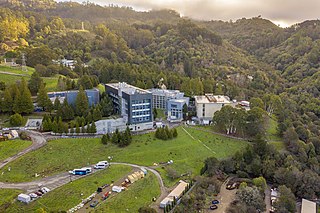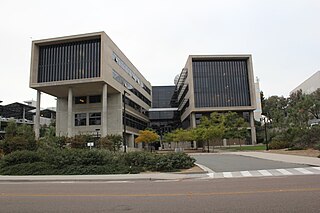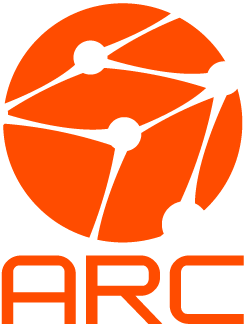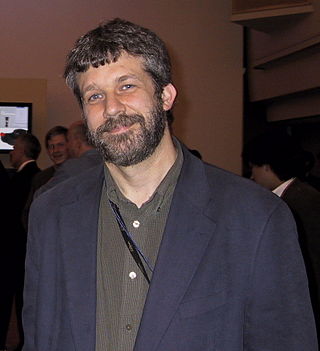Grid computing is the use of widely distributed computer resources to reach a common goal. A computing grid can be thought of as a distributed system with non-interactive workloads that involve many files. Grid computing is distinguished from conventional high-performance computing systems such as cluster computing in that grid computers have each node set to perform a different task/application. Grid computers also tend to be more heterogeneous and geographically dispersed than cluster computers. Although a single grid can be dedicated to a particular application, commonly a grid is used for a variety of purposes. Grids are often constructed with general-purpose grid middleware software libraries. Grid sizes can be quite large.

Lawrence Berkeley National Laboratory (LBNL) is a federally funded research and development center in the hills of Berkeley, California, United States. Originally established in 1931 by the University of California (UC), the laboratory is now sponsored by the United States Department of Energy and administrated by the UC system. Ernest Lawrence, who won the Nobel prize for inventing the cyclotron, founded the Lab and served as its Director until his death in 1958. Located in the hills of Berkeley, California, the lab overlooks the campus of the University of California, Berkeley.

Argonne National Laboratory is a federally funded research and development center in Lemont, Illinois, United States. Founded in 1946, the laboratory is now sponsored by the United States Department of Energy and administered by UChicago Argonne LLC of the University of Chicago. The facility is the largest national laboratory by size and scope in the Midwest.
The Globus Toolkit is an open-source toolkit for grid computing developed and provided by the Globus Alliance. On 25 May 2017 it was announced that the open source support for the project would be discontinued in January 2018, due to a lack of financial support for that work. The Globus service continues to be available to the research community under a freemium approach, designed to sustain the software, with most features freely available but some restricted to subscribers.

The San Diego Supercomputer Center (SDSC) is an organized research unit of the University of California, San Diego (UCSD). SDSC is located at the UCSD campus' Eleanor Roosevelt College east end, immediately north the Hopkins Parking Structure.
Ian Tremere Foster is a New Zealand-American computer scientist. He is a distinguished fellow, senior scientist, and director of the Data Science and Learning division at Argonne National Laboratory, and a professor in the department of computer science at the University of Chicago.
The Biomedical Informatics Research Network, commonly referred among analysts as “BIRN” is a national proposed project to assist biomedical researchers in their bioscience investigations through data sharing and online collaborations. BIRN provides data-sharing infrastructure, advisory services from a single source and software tools and techniques. This national initiative is funded by NIH Grants, the National Center for Research Resources and the National Institute of General Medical Sciences (NIGMS), a component of the United States National Institutes of Health (NIH).
United States federal research funders use the term cyberinfrastructure to describe research environments that support advanced data acquisition, data storage, data management, data integration, data mining, data visualization and other computing and information processing services distributed over the Internet beyond the scope of a single institution. In scientific usage, cyberinfrastructure is a technological and sociological solution to the problem of efficiently connecting laboratories, data, computers, and people with the goal of enabling derivation of novel scientific theories and knowledge.

TeraGrid was an e-Science grid computing infrastructure combining resources at eleven partner sites. The project started in 2001 and operated from 2004 through 2011.
The cancer Biomedical Informatics Grid (caBIG) was a US government program to develop an open-source, open access information network called caGrid for secure data exchange on cancer research. The initiative was developed by the National Cancer Institute and was maintained by the Center for Biomedical Informatics and Information Technology (CBIIT). In 2011 a report on caBIG raised significant questions about effectiveness and oversight, and its budget and scope were significantly trimmed. In May 2012, the National Cancer Informatics Program (NCIP) was created as caBIG's successor program.

EPCC, formerly the Edinburgh Parallel Computing Centre, is a supercomputing centre based at the University of Edinburgh. Since its foundation in 1990, its stated mission has been to accelerate the effective exploitation of novel computing throughout industry, academia and commerce.

Advanced Resource Connector (ARC) is a grid computing middleware introduced by NorduGrid. It provides a common interface for submission of computational tasks to different distributed computing systems and thus can enable grid infrastructures of varying size and complexity. The set of services and utilities providing the interface is known as ARC Computing Element (ARC-CE). ARC-CE functionality includes data staging and caching, developed in order to support data-intensive distributed computing. ARC is an open source software distributed under the Apache License 2.0.

Charlie Catlett is a senior computer scientist at Argonne National Laboratory and a visiting senior fellow at the Mansueto Institute for Urban Innovation at the University of Chicago. From 2020 to 2022 he was a senior research scientist at the University of Illinois Discovery Partners Institute. He was previously a senior computer scientist at Argonne National Laboratory and a senior fellow in the Computation Institute, a joint institute of Argonne National Laboratory and The University of Chicago, and a senior fellow at the University of Chicago's Harris School of Public Policy.
The D-Grid Initiative was a government project to fund computer infrastructure for education and research (e-Science) in Germany. It uses the term grid computing. D-Grid started September 1, 2005 with six community projects and an integration project (DGI) as well as several partner projects.

The Open Grid Forum (OGF) is a community of users, developers, and vendors for standardization of grid computing. It was formed in 2006 in a merger of the Global Grid Forum and the Enterprise Grid Alliance. The OGF models its process on the Internet Engineering Task Force (IETF), and produces documents with many acronyms such as OGSA, OGSI, and JSDL.
CNGrid is the Chinese national high performance computing network supported by 863 Program.

Fabric computing or unified computing involves constructing a computing fabric consisting of interconnected nodes that look like a weave or a fabric when seen collectively from a distance.
The SHIWA project within grid computing was a project led by the LPDS of MTA Computer and Automation Research Institute. The project coordinator was Prof. Dr. Peter Kacsuk. It started on 1 July 2010 and lasted two years. SHIWA was supported by a grant from the European Commission's FP7 INFRASTRUCTURES-2010-2 call under grant agreement n°261585.

Francine Berman is an American computer scientist, and a leader in digital data preservation and cyber-infrastructure. In 2009, she was the inaugural recipient of the IEEE/ACM-CS Ken Kennedy Award "for her influential leadership in the design, development and deployment of national-scale cyberinfrastructure, her inspiring work as a teacher and mentor, and her exemplary service to the high performance community". In 2004, Business Week called her the "reigning teraflop queen".









